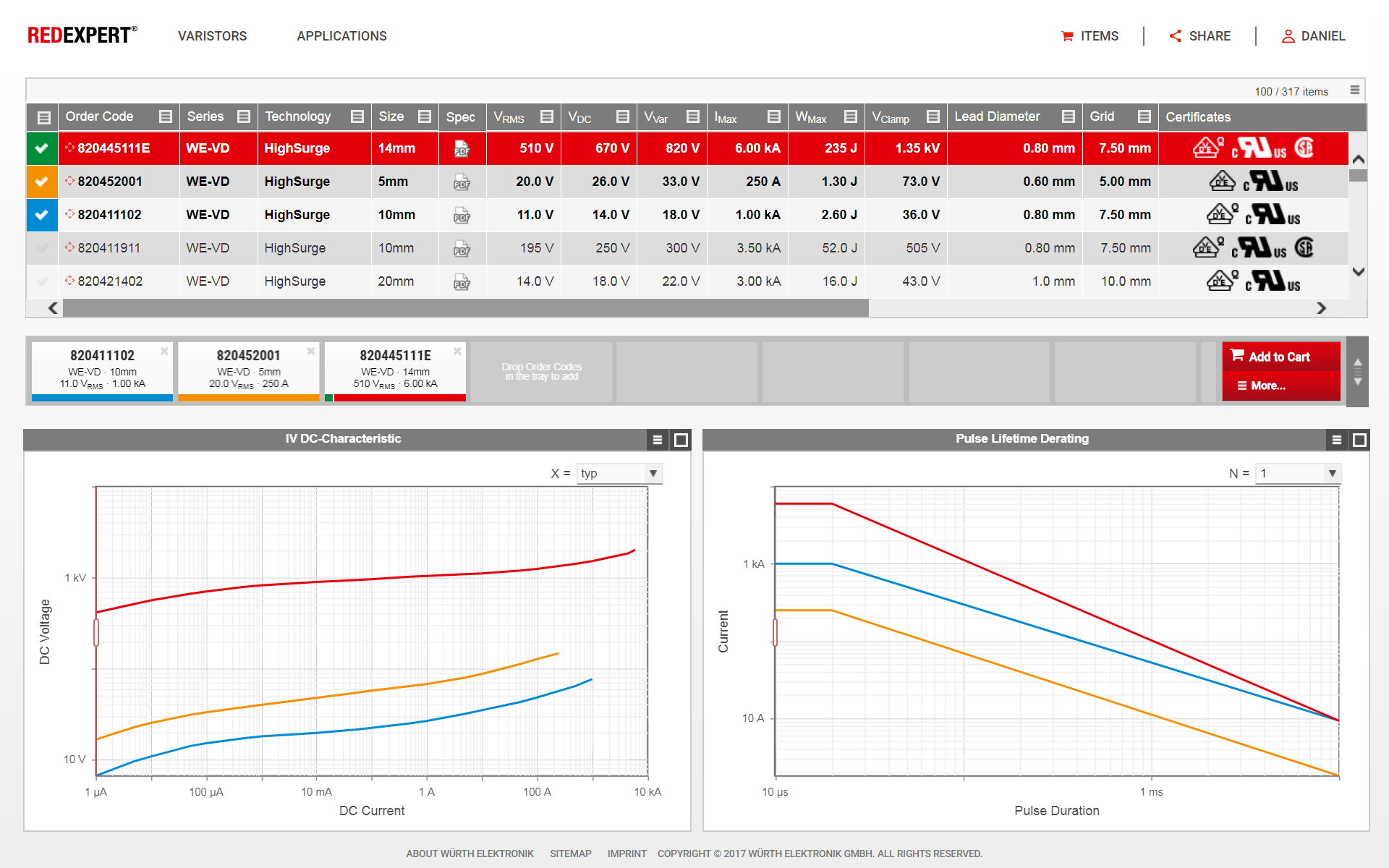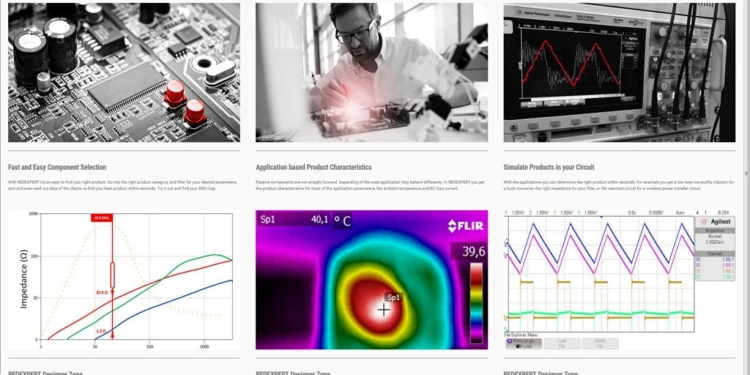source: Würth Elektronik eiSos news
Waldenburg (Germany), 21 February 2018 – Würth Elektronik eiSos has expanded the capabilities of its REDEXPERT free simulation software by adding more search modules for additional applications. From now on, LEDs, varistors and PFC coils can also be selected in a practice-oriented way on the basis of the measurement data stored in the system. The tool’s redesigned user interface allows developers to select electronic components quickly and precisely based on numerous parameters and filter options.
REDEXPERT was launched by Würth Elektronik eiSos in 2015 as a tool with the world’s most precise AC loss calculation for power chokes, and has been continuously expanded ever since. The same also applies for the product groups like the LEDs, varistors and PFC coils, now also included in the simulation tool. The computational basis of REDEXPERT is formed by real measurement data which the manufacturer of electronic and electromechanical components determined in real circuits. In the latest version of the online platform, navigation is even more convenient and a wide range of application models is available in the REDEXPERT application area for improved component selection. This means that parametric filters can be applied directly in the graph of the components.
We are new
Varistors are important components to conduct away overvoltages and therefore to protect the circuit from voltage transients. Based on several charts, such as voltage against current or service life curves, users can select their varistors in a practically-oriented way with the help of measurement-based data. For LEDs – UV, IR, visible and white – the luminous flux can be determined precisely in the chart and the product table for any forward current based on measurement data. For PCB ferrites, the impedance curves can be displayed for different DC currents and the anticipated attenuation in the circuit, taking into consideration the input and output impedance of the system. A model based on real measurement data is included for calculating AC loss of power chokes with which AC and DC losses can be determined precisely for almost any topology.

The most important functions and operating concepts are explained in video tutorials. REDEXPERT is freely available to users at www.we-online.com/redexpert.































